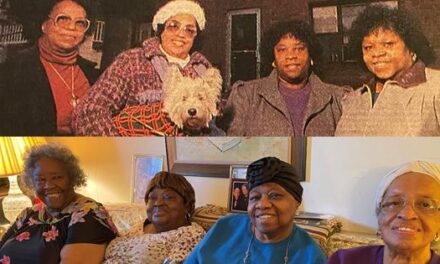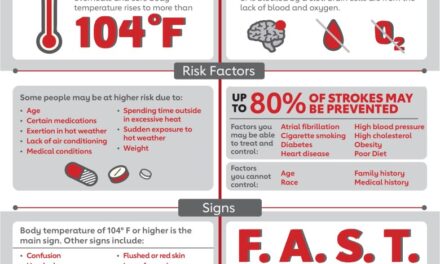
Between December 2019 and April 2021, 18 ciswomen recently diagnosed with HIV in Chicago, IL participated in the study. As seen in Table 1, participants were mostly Black/African American (55.6%) and young (median age of 34). Neighborhoods were reported and confirmed by zip code within EMRs for 15/18 participants. Of those women, 14 resided in Cook County, Illinois with 11 participants living in the city of Chicago; 1 participant lived in Indiana.
Our study identified two main themes related to HIV risk among participants: contextual factors and relationship factors. Further, potential pre-diagnosis intervention points and missed opportunities for PrEP were identified during reproductive health/prenatal visits, behavioral/mental health visits, and routine STI testing. Consistent themes among patients are highlighted below. Our evaluation of multiple data sources included investigating the presence or absence of information in the EMR as well as whether or not pertinent information could be gathered from open access sources (Table 2).
Common HIV risk factors- contextual
Contextual factors that increased participants’ vulnerability to HIV included experiencing homelessness, engaging in survival sex, unemployment, and drug/alcohol use/misuse. In qualitative interviews, some women reported engaging in survival sex or sex work to support themselves, as this participant describes the intersection of her drug use and engagement in sex work:
“During the course of my alcohol and drug use, I was a sex worker. I worked the streets as a prostitute and that’s another reason why I, when I got diagnosed, I couldn’t really pinpoint how I contracted it [HIV].” (ID 3).
Some participants experienced housing instability and/or homelessness during the year of their HIV diagnosis:
“After I left high school, that’s when everything went downhill for a long time… of back and forth and just… I was homeless…even though I had places to go, I didn’t have my own.” (ID 7).
Further, nine (50.0%) women reported moving at least once during the year prior to their HIV diagnosis indicating an increased level of housing mobility. Participants also described periods of un- or underemployment, difficulty with making “ends meet”, and the impact of drug/alcohol use on their sexual behavior and relationships.
Evaluating EMR data, 11/15 (73.3%) participants had documentation of either current or past alcohol use/abuse. Just over half of participants (53.3%) had descriptions of either current or past drug use/abuse (including marijuana) within their EMR. Engagement in sex work was documented for one patient in free-text notes. Employment status, including descriptions of employment or unemployment both prior to and after HIV diagnosis, and information regarding housing instability or homelessness was found within the EMR for 13/15 (86.7%) women.
Reflective of participant’s narratives, using open source data, 18.2% of participants lived in community areas of Chicago that ranked in the top 10% of the economic hardship index. Six (54.5%) women lived in community areas that ranked in the top 25% of households with income below the poverty level. Five (45.5%) participants lived in community areas that ranked in the top 25% for unemployment rate for the population aged 16 and older within Chicago.
Common HIV risk factors- relationship
Women described their sexual and romantic relationships during the time period in which they were exposed to HIV. These relationships often had characteristics that increased their risk for HIV acquisition. One of these characteristics was control and violence within intimate partner relationships:
“I didn’t know how to get away, and the more-the more I would- the longer I was with him, the harder it became to find my way out. I became dependent because I pushed everybody off- out of my life.” (ID 18).
At times, participants described physical abuse due to their partner’s drug and alcohol use:
“He had become violent. He had to stop- he was using. He was smoking cocaine, smoking crack, and that was dangerous for me…” (ID 3).
“When I did feel unsafe, I called the police. Because we had fights. We had fights. Because he, of course, was an alcoholic too [in addition to his family member]. And, he…he gets angry when he drinks and when he can’t have things his way.” (ID 6).
Participants also described relationships in which their male partners had multiple other sex partners and/or were having sex with other men:
“I was feeling good. And looking for next steps, what to do…I just met a guy and kind of really, really fell for him. Looking back, I see all the people he hung out with were LGBT. And yeah, I knew he had, uh, a husband.” (ID 11).
“Yeah, he’s bisexual. That I know. I found that out too.” (ID 18).
“I actually caught him with, um, like, five other girls.” (ID 15).
Finally, participants shared that their male partners were incarcerated or had histories of incarceration:
“He’s currently incarcerated right now, and he was incarcerated before I met him.” (ID 14).
In the EMR data, of the 15 participants who had available data, 100% had descriptions of their relationship status. Fourteen (93.3%) were listed as single and 1 (6.7%) was listed as partnered. The majority of participants (11/15; 73.3%) also had documentation regarding their sexual history/activity (e.g., number of sexual partners, protected vs. unprotected sex). Of the 18 participants, 6 (33.3%) women reported having a male partner who had sex with other men (MSM), and 8 (44.4%) participants reported having a sexual partner who had been incarcerated previously. None of this information about partners’ MSM sexual activity or prior incarceration was documented within the EMR.
Overall, 11/18 (61.1%) participants had at least one previous STI diagnosis. Of these 11 women, 2 (18.2%) were documented in the EMR alone and not reported during the interview, 1 (9.1%) was both documented in the EMR and reported during the interview, and 8 (72.7%) were only reported during the interview and missing from the EMR records we reviewed.
Potential pre-diagnosis intervention points and missed opportunities for PrEP linkage
We identified several pre-diagnosis intervention points that could increase access to PrEP and support uptake among ciswomen. Participants were generally engaged in routine healthcare and sexual health screenings. Many women felt that healthcare providers should talk to patients about PrEP, either in reproductive health visits, as this participant describes:
“I think when they [women] go to get their physicals, like when they go to see the gynecologist for their Pap smear and stuff like that, they should be offering [PrEP] and someone should stay with them and tell them like, ‘This is to prevent, you know, this, from getting HIV.’” (ID 6).
or during routine healthcare visits, as these participants describe:
“I feel like, uh, more healthcare providers should bring it [PrEP] up, or you know, recommend it more and maybe…more women will be aware to it because I’m one of those women that was not aware to it at all, until it was too late.” (ID 12).
“I don’t see why doctors wouldn’t just see it as part of their job to do it [offer PrEP], as they see as part of their job to offer all of these other medications and vaccines; like, it’s just another one added to the list of other things to give to their patients. Like, I don’t see why they can’t just add it.” (ID 15).
Close to half of the participants (7/15; 46.7%) had prior HIV test results within their EMR, with 6/7 (85.7%) listing the date of their last negative test. Overall, 10/18 (55.6%) participants had at least one mental health disorder prior to their HIV diagnosis; 6/10 (60%) were both documented in the EMR and reported during the interview, and 4/10 (40.0%) were only reported during the interview and missing from the EMR. Overall, 9/18 (50.0%) women saw a mental health professional prior to their HIV diagnosis. Of these 9 women, 2 (22.2%) were both documented in the EMR and reported during the interview, and 7 (77.8%) were only reported during the interview and missing from the EMRs that were reviewed.
For the 11 women living in Chicago, 6 (54.5%) participants resided in community areas that ranked in the top 25% for both HIV incidence and HIV prevalence rates within Chicago in 2019. Eight (72.7%) participants lived in neighborhoods that ranked in the top 25% for both chlamydia and gonorrhea incidence rates. Three (27.3%) women resided in community areas that ranked in the top 10% for primary and secondary (P&S) syphilis incidence rate for Chicago in 2019.
In discussing PrEP awareness during the qualitative interviews, 12 women (66.7%) reported they had not heard of PrEP prior to their diagnosis, expressed that they were unaware that PrEP was available for women to take, or were never offered PrEP by a healthcare provider prior to their diagnosis. One participant articulated her perceptions that PrEP is not often discussed among straight people and talking about PrEP is more acceptable in gay communities:
“I associate PrEP more, and I’m gonna be honest, with gay men. It’s not something I think that’s brought up in the straight community between, you know, a woman and a man that’s in, you know, in that type of relationship…when I hear people talking about PrEP or when I see commercials, or when I see things, I feel like it’s more associated towards, um, the gay community, to be honest.” (ID 18).




